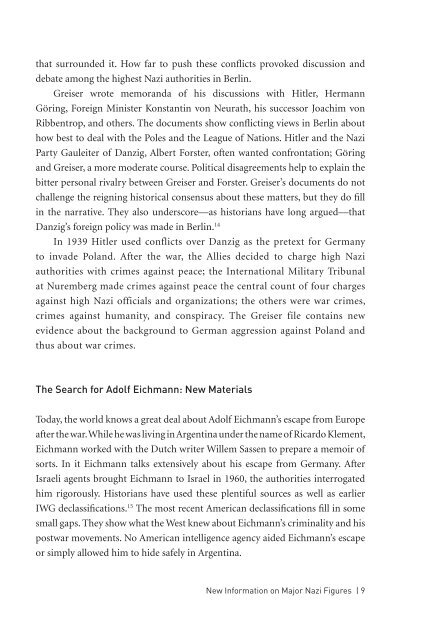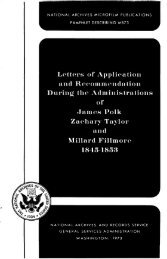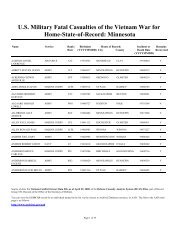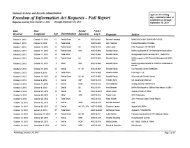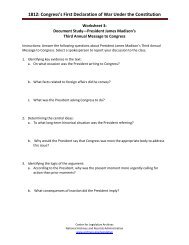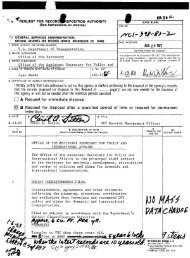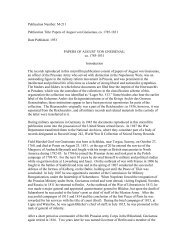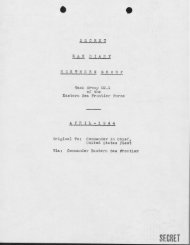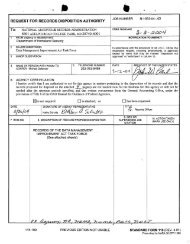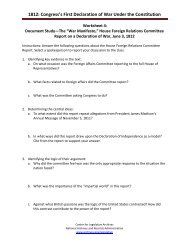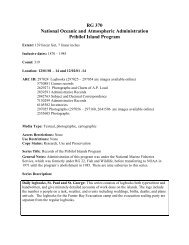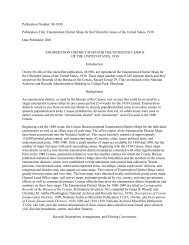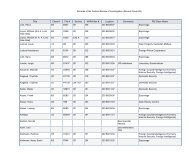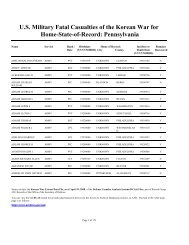HITLER'S SHADOW - National Archives and Records Administration
HITLER'S SHADOW - National Archives and Records Administration
HITLER'S SHADOW - National Archives and Records Administration
Create successful ePaper yourself
Turn your PDF publications into a flip-book with our unique Google optimized e-Paper software.
that surrounded it. How far to push these conflicts provoked discussion <strong>and</strong><br />
debate among the highest Nazi authorities in Berlin.<br />
Greiser wrote memor<strong>and</strong>a of his discussions with Hitler, Hermann<br />
Göring, Foreign Minister Konstantin von Neurath, his successor Joachim von<br />
Ribbentrop, <strong>and</strong> others. The documents show conflicting views in Berlin about<br />
how best to deal with the Poles <strong>and</strong> the League of Nations. Hitler <strong>and</strong> the Nazi<br />
Party Gauleiter of Danzig, Albert Forster, often wanted confrontation; Göring<br />
<strong>and</strong> Greiser, a more moderate course. Political disagreements help to explain the<br />
bitter personal rivalry between Greiser <strong>and</strong> Forster. Greiser’s documents do not<br />
challenge the reigning historical consensus about these matters, but they do fill<br />
in the narrative. They also underscore––as historians have long argued––that<br />
Danzig’s foreign policy was made in Berlin. 14<br />
In 1939 Hitler used conflicts over Danzig as the pretext for Germany<br />
to invade Pol<strong>and</strong>. After the war, the Allies decided to charge high Nazi<br />
authorities with crimes against peace; the International Military Tribunal<br />
at Nuremberg made crimes against peace the central count of four charges<br />
against high Nazi officials <strong>and</strong> organizations; the others were war crimes,<br />
crimes against humanity, <strong>and</strong> conspiracy. The Greiser file contains new<br />
evidence about the background to German aggression against Pol<strong>and</strong> <strong>and</strong><br />
thus about war crimes.<br />
The Search for Adolf Eichmann: New Materials<br />
Today, the world knows a great deal about Adolf Eichmann’s escape from Europe<br />
after the war. While he was living in Argentina under the name of Ricardo Klement,<br />
Eichmann worked with the Dutch writer Willem Sassen to prepare a memoir of<br />
sorts. In it Eichmann talks extensively about his escape from Germany. After<br />
Israeli agents brought Eichmann to Israel in 1960, the authorities interrogated<br />
him rigorously. Historians have used these plentiful sources as well as earlier<br />
IWG declassifications. 15 The most recent American declassifications fill in some<br />
small gaps. They show what the West knew about Eichmann’s criminality <strong>and</strong> his<br />
postwar movements. No American intelligence agency aided Eichmann’s escape<br />
or simply allowed him to hide safely in Argentina.<br />
New Information on Major Nazi Figures | 9


